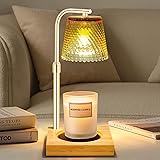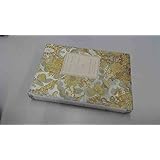When creating an optimal workspace, the type of lighting chosen is often overlooked, yet its impact on productivity, comfort, and even mood can be profound. Many people struggle with finding the right balance, enduring eye strain, distracting shadows, or an overall uninspiring environment. Fortunately, understanding the various lighting options and their specific benefits can transform any study or office area into a more effective and pleasant space. This guide expands on the brief insights shared in the video above, offering a deeper dive into selecting the best lighting for your study or office work.
Understanding Different Lighting Options for Your Workspace
The quest for the perfect work environment often begins with addressing illumination. Suboptimal lighting conditions can lead to fatigue, reduced focus, and even headaches, making sustained concentration a challenge. Therefore, careful consideration of how light is introduced into your study or office is essential for fostering a productive atmosphere. A common misconception is that more light is always better; however, the quality and type of illumination are far more important than mere brightness.
Side Lighting: Ambient Glow vs. Practicality
Side lighting, as mentioned in the video, is frequently associated with an ambient or romantic atmosphere. This type of lighting emanates from a source positioned to the side of the viewer, such as a floor lamp or a table lamp placed away from the immediate work area. While a soft glow can be appealing for creating a relaxed mood, it is typically considered too dim when significant visual tasks are being performed. The primary purpose of side lighting is often accentuation or general room illumination, not direct task support. When used for work, shadows might be cast awkwardly across your desk or materials, potentially hindering clarity.
For instance, a stylish table lamp on a credenza or a decorative floor lamp in the corner can contribute to the overall aesthetic. However, if this is the only source of light during work hours, it may force your eyes to strain unnecessarily. Supplemental task lighting is almost always required if side lighting is relied upon for general ambiance. Despite its limitations for focused work, side lighting does play a role in reducing the harsh contrast between a brightly lit screen and a dark room, thereby preventing digital eye strain.
Overhead Lighting: Dispelling the Shadows
Overhead lighting, often provided by ceiling fixtures such as recessed lights or chandeliers, is a common solution in many homes and offices. It provides broad illumination across the entire space. While convenient for general visibility, the video correctly points out that overhead lighting can cast annoying shadows. This occurs because the light source is directly above, causing shadows to fall from your head, shoulders, or even your hand as you write or type. These dynamic shadows can be distracting and frustrating, making detailed work difficult.
Moreover, the quality of overhead lighting can significantly impact how a space feels. If the light is too harsh or has an unsuitable color temperature, the environment might be perceived as depressing or sterile. For example, a bright, cool white fluorescent light can make a room feel clinical rather than inviting. A more balanced approach involves using overhead lighting as a base layer, ensuring the room is not entirely dark, but not expecting it to fulfill all task-specific lighting needs.
Task Lighting: Focused Brilliance for Specific Jobs
Task lighting is specifically designed for focused activities, making it an intuitive choice for a study or office. This includes desk lamps, under-cabinet lights, or clip-on lamps that illuminate a confined area directly. The intention is to provide ample, glare-free light precisely where it is needed, enhancing visibility for reading, writing, or intricate computer work. However, as the video highlights, task lighting can sometimes be perceived as too bright or too harsh if not selected and positioned correctly. An overly intense beam can lead to eye discomfort and even create its own distracting glare off surfaces.
The key to effective task lighting is adjustability. A good desk lamp, for example, allows you to control the brightness, angle, and even the color temperature. It should be positioned to minimize shadows cast by your own body or hand. For right-handed individuals, the lamp is typically placed on the left side, and vice versa for left-handers. The goal is to provide sufficient illumination for your work without creating hotspots or excessive contrast with the surrounding ambient light. Modern LED desk lamps often come with dimming capabilities and options for different light temperatures, making them highly versatile.
Reflected Lighting: The Soft Glow Solution
Reflected lighting, also known as indirect lighting, emerges as a favorite in the video for its ability to cast soft, cloud-like shadows. This effect is achieved because the light source is directed towards a reflective surface, typically the ceiling or a wall, before bouncing back into the room. When light undergoes this reflection, it becomes diffused and spread out, significantly reducing harshness and sharp shadows. The ceiling effectively acts as a giant diffuser, distributing the light evenly and gently.
This approach is particularly beneficial for a study or office because it minimizes glare and creates a comfortable, uniform illumination that is less taxing on the eyes. For instance, an upward-facing floor lamp, sometimes called a torchiere, directs its light towards the ceiling, which then reflects it softly downwards. Similarly, a pendant light with an opaque shade that directs light upwards can achieve a similar effect. This type of lighting is excellent for overall ambient illumination in a workspace, providing a foundation of soft light that can be complemented by adjustable task lighting. The even spread of light ensures that the entire room is comfortably lit without creating bright spots or deep shadows that can lead to eye fatigue during prolonged periods of work or study.











